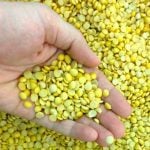You notice a calf lying down and kicking at its belly, back up and running, then dropping down and kicking again. Suspecting a serious problem, you get him in but in an hour he is back to normal. What about the beautiful six-week-old calf – fat and healthy – that you found dead in the […] Read more




